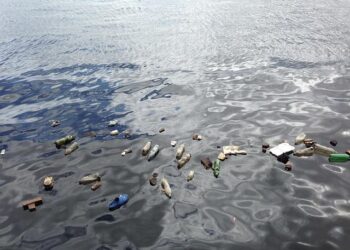Viruses play crucial roles in the ecosystem. They modulate the host community structure, mediating biogeochemical cycles and compensating for the metabolism of host cells.
Mariana Trench, the deepest place on Earth, hosts a variety of unique microorganisms that have adapted to its extreme conditions of low temperatures, high pressure, and nutrient scarcity. However, our knowledge about isolated hadal phage strains in the hadal trench is still limited.
Marine virologists analyzed sediment from the Mariana Trench and identified a virus. The virus is a bacteriophage that infects and replicates inside bacteria, and bacteriophages are believed to be the most abundant life forms on the planet.
The sediment was brought up from a depth of 8,900 meters.
Scientists say this is the deepest known isolated phage in the global ocean.
The recently discovered phage infects bacteria belonging to the phylum Halomonas, frequently discovered in sediments from deep seas and hydrothermal vents, which are openings on the seafloor resembling geysers that spew heated water streams.
According to marine virologist Min Wang, Ph.D., at the Ocean University of China, in Qingdao, the team’s research of the viral genetic material provides new information about the variety, evolution, and genomic characteristics of deep-sea phages as well as phage-host interactions. It also suggests the existence of a hitherto unidentified viral family in the deep ocean.
The scientists have previously utilized metagenomic analysis to investigate viruses that infect bacteria belonging to the order Oceanospirallales, which includes Halomonas. For the latest study, a team collected and isolated bacterial strains from which Wang’s team searched for viruses. The research examines microbial life in harsh conditions, such as the Mariana Trench and polar regions.
Wang said, “The genomic analysis of the new virus, identified as vB_HmeY_H4907, suggests that it is distributed widely in the ocean and has a similar structure to its host. The study points to new questions and research areas focused on the survival strategies of viruses in harsh, secluded environments—and how they co-evolve with their hosts.”
“The new virus is lysogenic, invading and replicating inside its host, but usually without killing the bacterial cell. As the cell divides, the viral genetic material is also copied and passed on.”
“In future studies, the group plans to investigate the molecular machinery that drives interactions between deep-sea viruses and their hosts. They’re also searching for other new viruses in extreme places, which would broaden our comprehension of the virosphere. Extreme environments offer optimal prospects for unearthing novel viruses.”
Journal Reference:
Yue Su, Wenjing Zhang, Yantao Liang et al. Identification and genomic analysis of temperate Halomonas bacteriophage vB_HmeY_H4907 from the surface sediment of the Mariana Trench at a depth of 8,900 m. Microbiology Spectrum. DOI: 10.1128/spectrum.01912-23
>>> Read full article>>>
Copyright for syndicated content belongs to the linked Source : Tech Explorist – https://www.techexplorist.com/new-virus-deepest-place-earth/70689/#utm_source=rss&utm_medium=rss&utm_campaign=new-virus-deepest-place-earth































